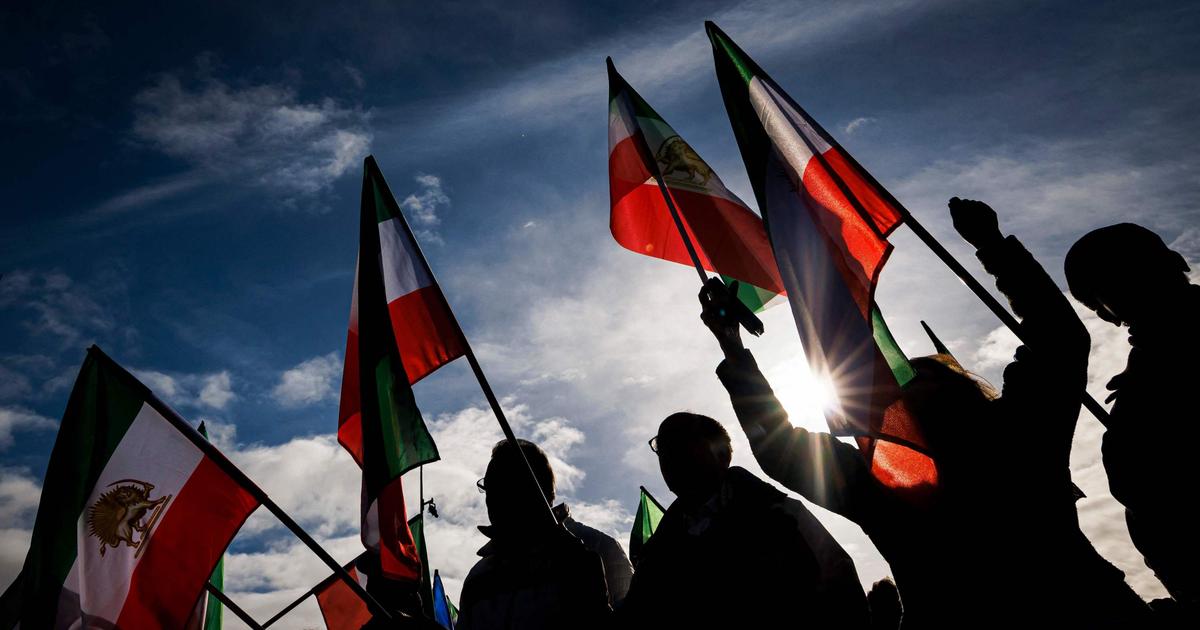Two months after the uprising of part of the Iranian population following the death of Mahsa Amini, the revolt continues to rumble in Iran.
Repressed in blood, the demonstrations continue in Tehran, but also in Iranian Kurdistan, region of origin of the young woman of 22 years who died after her arrest by the police of vices for having broken the strict dress code imposing to wear the veil in public.
Where are the revolts in the country?
The troubles still cover the whole country, from the outskirts to the big cities.
In the south-west, in Karaj, to the north-west in Orumieh via the capital Tehran, demonstrations still took place this Thursday evening.
The state also continues to regularly shut down the internet to reduce solidarity between demonstrators and stifle protest.
After almost 10 weeks of demonstrations, the revolts that the country is experiencing "
are therefore not a flash in the pan, but a ground swell
," says
Le Figaro
Antoine Basbous, founder and director of the Observatory of Arab Countries.
And the authorities have issued several ultimatums, including the head of the regular army, without discouraging the demonstrators.
Read alsoIran threatens Iraq with an anti-Kurdish operation
Does the repression of the movement continue?
The Iranian regime is also continuing to suppress the movement.
During the last week of demonstrations, Iranian security forces killed 72 people, including 56 in Iranian Kurdistan, the NGO Iran Human Rights (IHR), based in Oslo, said on Tuesday November 22.
Among those dead are 51 children and 21 women, according to IHR.
The total toll therefore stands at 416 dead since the beginning of the protest movement.
Iranians in a Tehran metro station fleeing and falling as gunshots are heard.
- /AFP
Protests continue in Tehran.
WANA NEWS AGENCY / REUTERS
At the same time, several thousand people were arrested.
Demonstrators but also “
journalists, actresses, directors, academics, sportsmen
”.
The latest being the famous footballer Voria Ghafouri, accused of having "
insulted and sullied the reputation of the national team (Team Melli) and of having engaged in propaganda
" against the state, reported the Iranian news agency Fars.
The 35-year-old footballer from Sanandaj, the capital of the province of Iranian Kurdistan, posted a photo on his Instagram account wearing traditional Kurdish clothing.
The violent repression would also have been marked by rapes committed on the demonstrators after their arrest, as the
CNN
.
Is Kurdistan paying the high price?
In recent days, demonstrations have taken place in several cities of Kurdistan - Mahabad, Javanroud or Piranchahr -, often linked to the funeral ceremonies of people killed by the police.
The Iranian Kurdish rights group Hengaw, also based in Norway, accused the authorities of firing live ammunition at protesters.
"
The repression is particularly severe in this region, because the Iranian forces use weapons of war against the demonstrators
", reports Antoine Basbous.
The authorities would also have brought in Shiite militiamen from neighboring countries "
who repress without qualms
", explains the researcher.
"
The Islamic Republic throws all its forces and
takes the opportunity to bomb Iraqi Kurdistan with missiles and drones on the pretext that it would fuel the protest
", also explains the researcher.
We must not forget, however, the many deaths that there have been elsewhere in the country such as in Balochistan, in the south-east.
On September 30, security forces fired on demonstrators gathered in Zahedan.
At least 92 people were killed, according to IHR, during this day dubbed "
Bloody Friday
" by human rights defenders.
Could the revolt lead to the overthrow of the regime?
Observers are unanimous.
This protest movement is historic.
“
In 2009, political protests were put down in less than two weeks, and in November 2019, economic protests were stopped in a few days
,” notes Antoine Basbous.
However, several elements are still missing for the dispute to turn into a revolution.
First of all, there should be major strikes in the oil industry, as in 1979, when the revolution led to the fall of the Shah.
To this paralysis of the country, means of pressure against the government, "
we would need splits within the regime
".
Read alsoIn Iran, young people determined to abolish the mullahs' regime
In any case, it is not the commission of inquiry set up by the UN Human Rights Council that will make the mullahs' regime bend.
Despite opposition from Tehran and Beijing, an international investigation has been opened into the crackdown on the protests to gather evidence of violations and possibly prosecute those responsible.
Urgently brought together at the initiative of Germany and Iceland, the 47 member states of the highest UN human rights body have decided to appoint a team of investigators.
"
To investigate, there must be cooperation with the regime, which agrees to bring investigators into detention centers, for example, but Tehran considers this operation as a Western charge, and more generally accuses imperialism and Zionism for having fomented the troubles
", explains Antoine Basbous.
This decision is in any case a welcome mark of support for the demonstrators in Iran.

